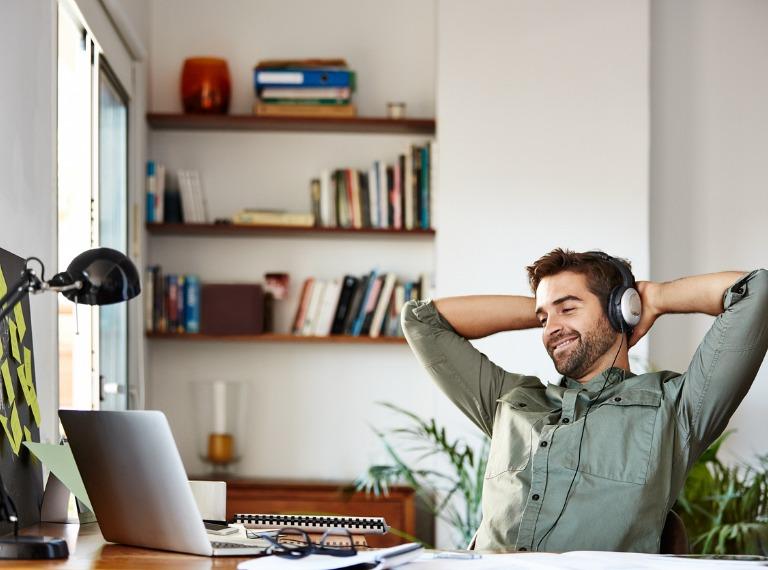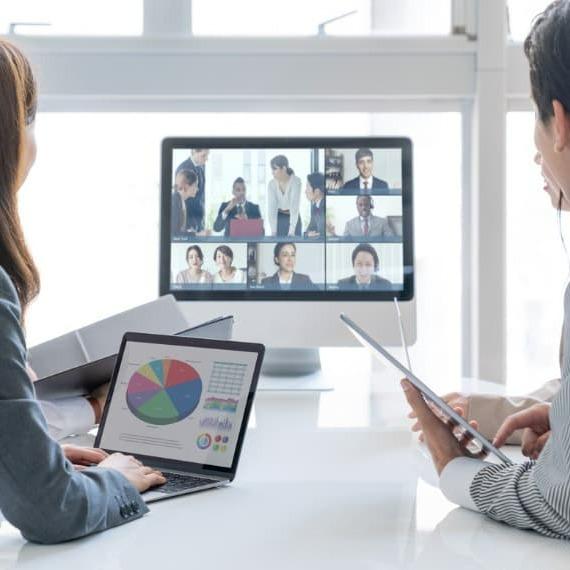Remote and hybrid working are here to stay, but many professionals are unaware of the potential hidden risks to their health from home-office environments. Health and safety remain paramount for the on-site workplace, but how can employers and employees ensure standards are met when working at home?
Edward Debrah, Health and Safety Advisor, Institution of Occupational Safety and Health (IOSH), answers our home-working health and safety questions.

Q: What should employees consider when creating their home office?
A: There are a number of things homeworkers must consider to mitigate health and safety risks.
The starting point, as with other health and safety risks, is to carry out a risk assessment to identify where there may be potential issues and then put in place measures to manage them.
These risks might include those associated with using computers and work equipment and whether the workstation is set up correctly. For example, they need to consider whether there is enough space to create a comfortable workstation.
Other potential health and safety risks associated with homeworking include stress, lone working, manual handling and fire.
Q: How important is it to have a proper office chair?
A: It’s hugely important, as there are many risks with not having one, many of them relating to musculoskeletal issues.
According to Posture Direct, a website dedicated to supporting people with improving their posture, a good office chair should have adjustable height, seat depth, seat tilt, back rest, lumbar support, arm rest, mobility and seat cushioning.
In comparison, dining table chairs are generally not adjustable and so will not offer the correct level of support for the back, hips and legs, which can lead to issues such as severe back pain.
Q: If space at home is lacking and the office is in a confined space, how can this impact health?
A: Workstations under stairs, in garages or in any other confined spaces are not generally recommended for remote working because these spaces often have limited access, poor temperature or ventilation control and a lack of natural light.
General health and safety hazards need to be considered by both the employer and the worker to prevent potential accidents.
Workspaces should also have good standards of housekeeping, including adequate lighting, removing trailing leads and not using the floor or high shelves for storage.
Q: For optimal working conditions at home, is there a limit on environmental factors like heat, light, and noise?
A: There are limits but there are many factors to take into consideration. Workers must perform risk assessments themselves to identify lighting, heat and noise concerns in their home environment so that any proportionate action may be taken.
Q: If an employee trips over a laptop cable or if a piece of office equipment causes a fire, would they have grounds to sue?
A: In the UK, under the Health and Safety at Work Act 1974, employers are responsible for creating safe workplaces and processes, while employees are responsible for their personal health and safety.
When it comes to homeworking, workers usually perform their home-based risk assessments before employers supply all work tools. In the event of an incident, should employers be able to prove beyond reasonable doubt that all checks were made, risks identified, and controls provided, an employee cannot sue. On the other hand, if an employee can prove the employer did not provide the suitable tools for work, workers could sue employers.
It is really a case of balance of probabilities.
Q: Is there a recommended period of break times throughout a 9-5 day at home?
A: This all comes down to company policy and an employee’s personal working plan. Working from home can be flexible but workers must take regular rest breaks as required.
Those who work 9-5 jobs must ensure breaks are taken to recharge, eat and rest but must be guided by company policy. The key is to practice good time management and to keep a well-functioning diary to track events.
Q: Many people have become used to working with distractions. Do think noise cancelling headphones are the best option?
A: Yes, headphones with noise cancellation features help workers to hear and speak clearly in meetings and when delivering presentations.
Q: How can employers ensure the health of their home-working staff is given equal care as those in the office?
A: Employers should first make sure homeworkers know the procedures for reporting work-related accidents and ill health or any health and safety concerns. All reports received should be investigated by the line manager, with competent health and safety or occupational health support where necessary.
As part of their routine, managers should enquire proactively about the health and safety of employees and it’s also advisable for organisations to monitor staff turnover and sickness rates. If these are higher than average, it may indicate that staff aren’t happy with working arrangements.
There needs to be monitoring of the organisation’s health and safety arrangements for remote working and their effectiveness. Create an ‘audit checklist for remote working’ and ‘feedback checklist for remote workers’ to collect data.
It’s vital that remote workers are included in company occupational health services such as health surveillance. If they use computers, they should receive free eye tests as appropriate.
Q: Are there any other key recommendations for home-working?
A: Be sure to put in place clear, consistent management systems that reduce risks to remote workers and ensure regular monitoring to ensure risks are adequately controlled.
While it’s sometimes hard to find the time to consider health and safety, especially at home where someone might not want to see bulky office equipment for aesthetic or space-saving reasons, workers must be urged to look after their wellbeing.
Checking-in is important for hybrid and remote staff, not just to prevent feelings of isolation but for their physical health too. We recommend consultation, involvement and representation of remote workers to close any feeling of divorce from site-based workers. Managers should make regular enquiries to be sure workers are following safe practices and not experiencing aches or symptoms of stress, encouraging self-assessment under their supervision.
Consider setting up a forum where employees can discuss work and any other concerns – and open clear communication lines.
Looking for a professional to fill a hybrid or remote working role, or seeking a new opportunity? Get in touch with our specialist consultants today.




